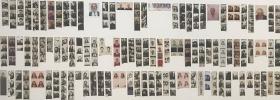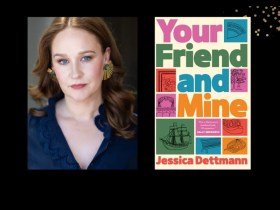Casting new light on institutions, Communicating the Arts took participants into galleries and museums. Image Alex Raupach.
‘Are you just here for a summer fling, or something more serious?’
It was just an aside from André Kraft, of the Komische Oper Berlin, during his opening keynote, but it got the attention of the delegates to Communicating the Arts Copenhagen. Bringing together arts organisations, and marketing and communication experts from around the world, the conference took ‘Build Partnerships’ as the motto for its 22nd edition this week. (The 23rd and 24th editions take place later this year in Montreal and Sydney, respectively). It set the tone for three days of sessions delving into how organisations can better partner up to collaborate creatively, extend their means and the find the audiences they can’t reach reach on their own.
So it was natural that Kraft’s question became the go-to analogy for a conference with a hint of summer fling about it. In the blush of the Danish summer and the salubrious settings of the three hosting institutions – Copenhagen’s Statens Museum for Kunst, the Louisiana Museum for Modern Art, and the Designmuseum Danmark – the conversation turned to inter-institutional affairs of all kinds. One-night stands, summer flings, long-term, long-distance, cohabitations, and even happy marriages were on the menu. It was about what makes partnerships work and, more revealingly, what makes them come apart.
A consistent picture emerged of what makes for successful creative partnerships, through keynotes from the directors of Denmark’s national cultural institutions and a roster of international guests. Key themes included:
- Share clear expectations. Partnerships rely on defining expectations clearly and the early communication that underpins them.
- Define success. A clear definition of success keeps goals aligned throughout the life of a project.
- Dialogue, dialogue, dialogue. Organisations need to invest time to maintain constant consultation. Or, in the words of COBE’s Dan Stubbergaard, speaking about navigating the heritage-sensitive forecourt redesign at the Designmuesum Danmark, ‘dialogue, dialogue, dialogue, dialogue, dialogue, dialogue. Dialogue.’
- Find the people who don’t love you already. Opposites attract. Organisations must resist the temptations of the familiar partners in order to do what has the most to offer, sparking new initiatives and reaching new people.
- Think internal too. Effective partnerships need the enthusiasm and understanding of staff from across an organisation, so building partnerships means working inwardly as well as outwardly.
So it was settled: partnerships require real resources, long-term planning, and constant attention. But how does this sound to small-to-medium organisations, seasonal festivals, and those operating in a, shall we say, less-than-Scandinavian funding environment?
Until this year Communicating the Arts was called Communicating the Museum. This year marks its expansion into the performing arts and small-to-medium organisations that operate without four walls of their own. The difference between the sectors is stark: to the the major institutions, partnerships are a way of enhancing their programming and reaching new audiences. But the new roster of speakers, most notably Tina Walsberger of the Edinburgh International Festival, made clear that for festivals, partnerships are a way of doing core business. The dialogue that has been established here is valuable: it will help festivals and small organisations learn how to work with big institutions more effectively, while better connecting those institutions to partners that, in charming Nordic museum parlance, get them ‘out of this house’.
Away from the keynotes, intimate case study sessions provided the opportunity to hear specific experiences, from dream rebrands to PR nightmares. The most interesting conversations emerged where organisations found themselves in political fault lines, whether by design or accident.
Linda Butler, from San Francisco’s deYoung Museum, detailed the PR toolkit and cultural engagement strategy that had enabled their blockbuster exhibition Contemporary Muslim Fashions to go from potential political football to a conversation-changing success and the cover of Vogue. Interestingly, when the exhibition toured to Frankfurt without its PR shield, the political footballers lined up, and an unlikely team including both feminist activists and right-wing reactionaries took turns for a kick.
Anna Jansson, from the National Museum of Sweden, spoke candidly about how the presentation of a John Singer Sargent sketch of a naked black man in an advertisement had been racially insensitive and prompted a new drive for openness and diversity at the institution. While Sarah Robertson and Jo Taylor spoke about how partnerships had helped Bristol’s beloved and soon-to-be-renamed Colston Hall navigate an identity crisis. Its new name is yet to be announced, but it won’t be that of 18th-century slave trader-philanthropist Edward Colston.
These sessions had something to say about where Communicating the Arts is going. Its next edition will be themed “Inclusivity, Empathy and Well-Being”, giving a platform to institutions who seek to put access and welfare at the centre of what they do. And the conference will continue to open up to the performing arts and smaller organisations who operate without four walls around them.
This can only be a good thing for fostering better creative partnerships. To paraphrase the director of Denmark’s Statens Museum for Kunst, Mikkel Bogh, the value of partnerships is that they break the walls down. At their best, they help the arts live as they are supposed to – not as a trophies lining the walls of palatial institutions, but as meeting points for mutual understanding in people’s lives.
Communicating the Arts comes to Sydney, 12-14 November 2019.





